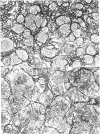Abstract
L-Azetidine-2-carboxylic acid (AZC), an analogue of proline, has been shown to partially ameliorate hepatic cirrhosis induced in rats by CCl4. AZC caused a diminution in formation of collagen in the liver accompanied by a relative decrease in the pool of free proline. The synthesis of noncollagenous proteins in the livers of treated rats did not appear to be affected.
Full text
PDF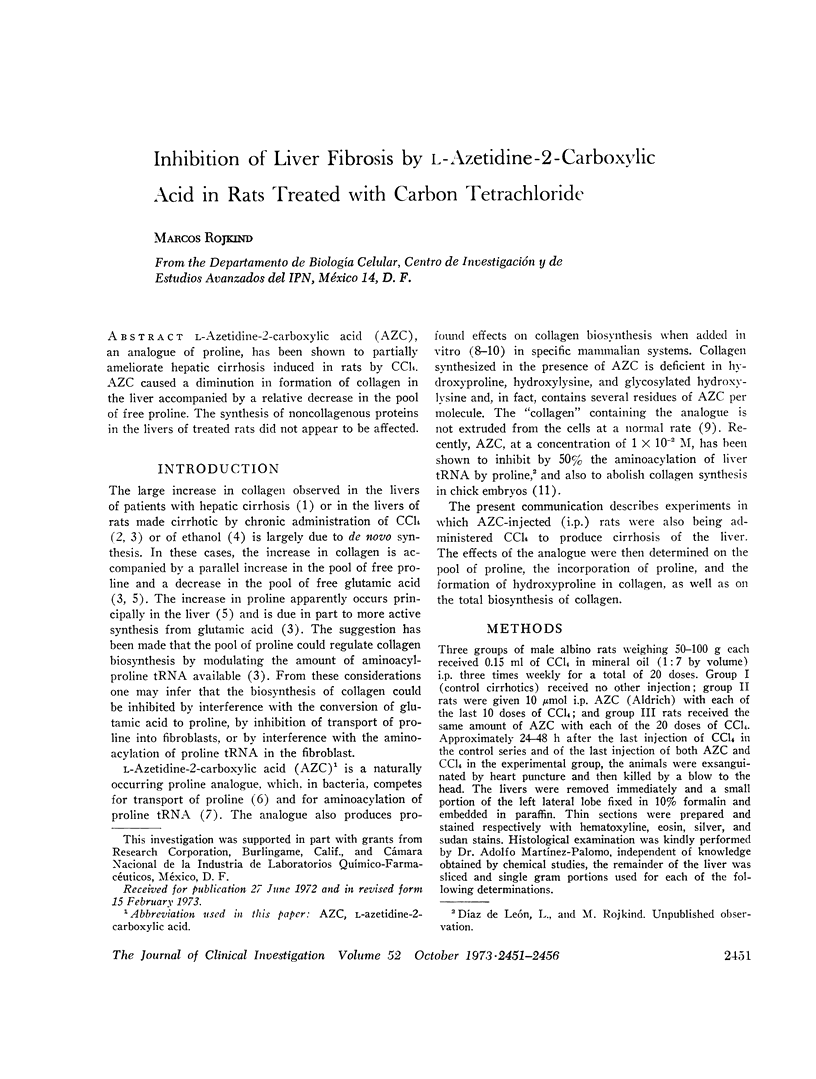

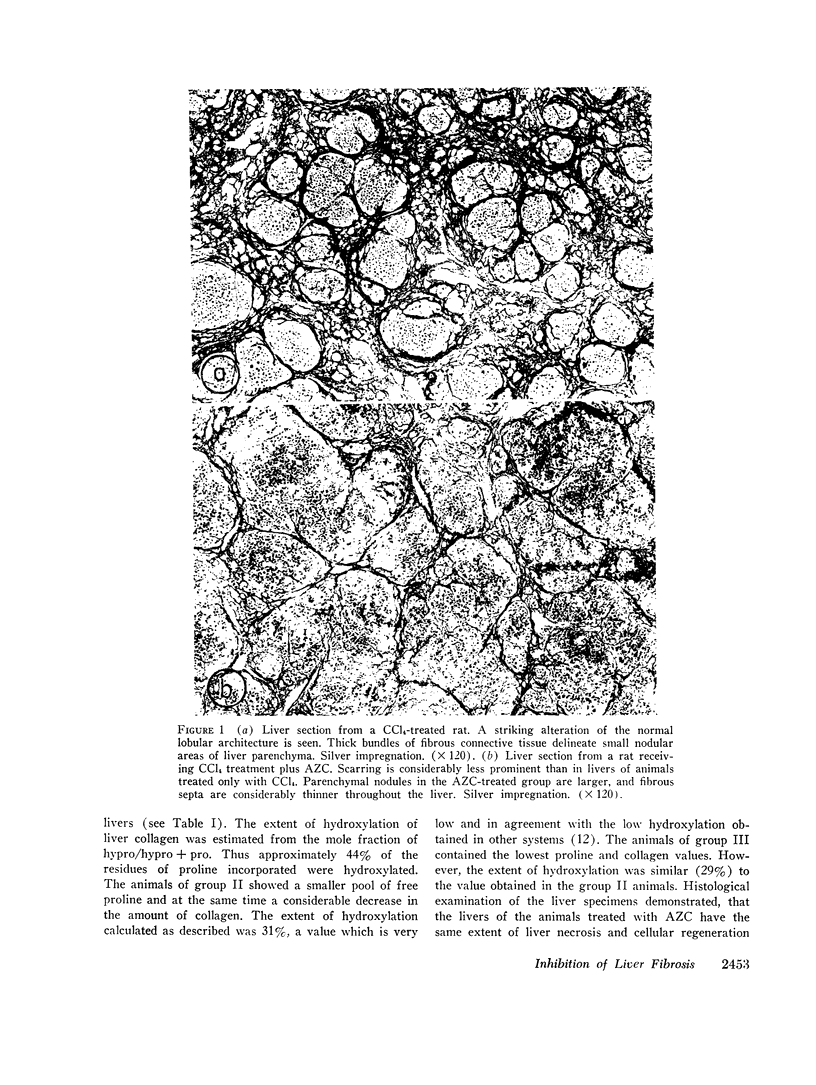
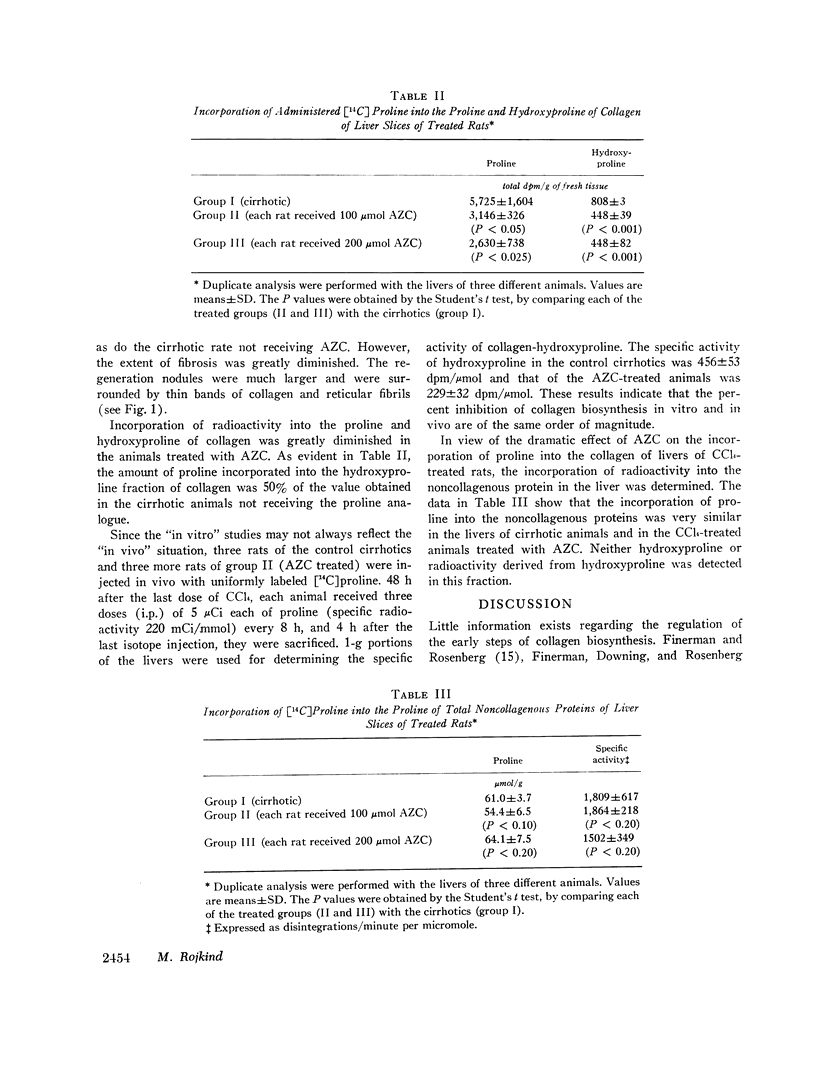
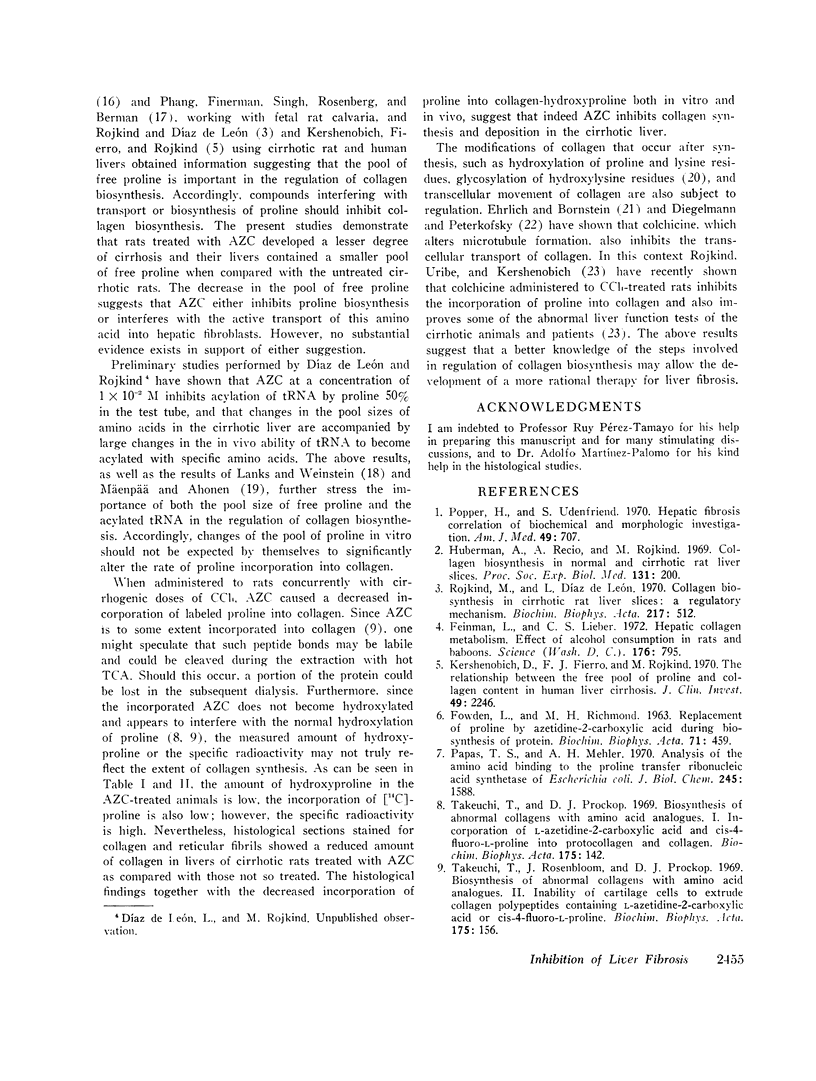
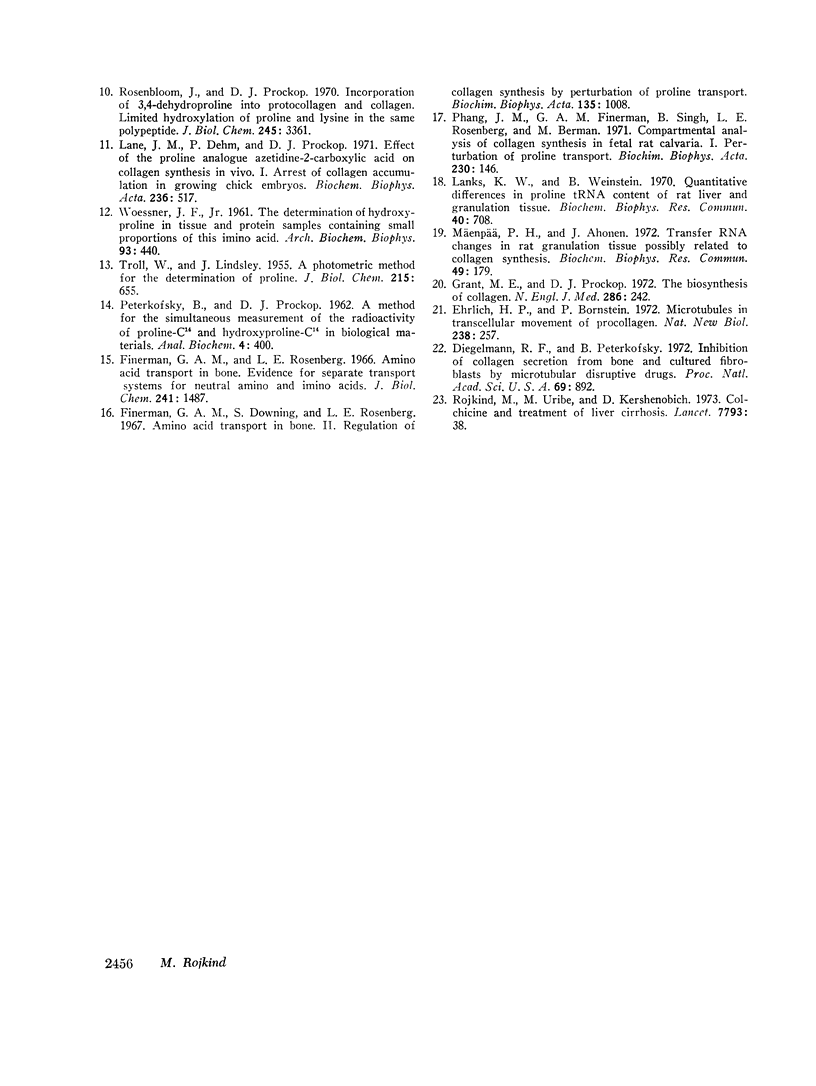
Images in this article
Selected References
These references are in PubMed. This may not be the complete list of references from this article.
- Diegelmann R. F., Peterkofsky B. Inhibition of collagen secretion from bone and cultured fibroblasts by microtubular disruptive drugs. Proc Natl Acad Sci U S A. 1972 Apr;69(4):892–896. doi: 10.1073/pnas.69.4.892. [DOI] [PMC free article] [PubMed] [Google Scholar]
- Ehrlich H. P., Bornstein P. Microtubules in transcellular movement of procollagen. Nat New Biol. 1972 Aug 30;238(87):257–260. doi: 10.1038/newbio238257a0. [DOI] [PubMed] [Google Scholar]
- Feinman L., Lieber C. S. Hepatic collagen metabolism: effect of alcohol consumption in rats and baboons. Science. 1972 May 19;176(4036):795–795. doi: 10.1126/science.176.4036.795. [DOI] [PubMed] [Google Scholar]
- Finerman G. A., Downing S., Rosenberg L. E. Amino acid transport in bone. II. Regulation of collagen synthesis by perturbation of proline transport. Biochim Biophys Acta. 1967;135(5):1008–1015. doi: 10.1016/0005-2736(67)90071-5. [DOI] [PubMed] [Google Scholar]
- Finerman G. A., Rosenberg L. E. Amino acid transport in bone. Evidence for separate transport systems for neutral amino and imino acids. J Biol Chem. 1966 Apr 10;241(7):1487–1493. [PubMed] [Google Scholar]
- Grant M. E., Prockop D. J. The biosynthesis of collagen. 2. N Engl J Med. 1972 Feb 3;286(5):242–249. doi: 10.1056/NEJM197202032860505. [DOI] [PubMed] [Google Scholar]
- Huberman A., Recio A., Rojkind M. Collagen biosynthesis in normal and cirrhotic rat liver slices. Proc Soc Exp Biol Med. 1969 May;131(1):200–203. doi: 10.3181/00379727-131-33839. [DOI] [PubMed] [Google Scholar]
- Kershenobich D., Fierro F. J., Rojkind M. The relationship between the free pool of proline and collagen content in human liver cirrhosis. J Clin Invest. 1970 Dec;49(12):2246–2249. doi: 10.1172/JCI106443. [DOI] [PMC free article] [PubMed] [Google Scholar]
- Lane J. M., Dehm P., Prockop D. J. Effect of the proline analogue azetidine-2-carboxylic acid on collagen synthesis in vivo. I. Arrest of collagen accumulation in growing chick embryos. Biochim Biophys Acta. 1971 Jun 29;236(3):517–527. doi: 10.1016/0005-2795(71)90235-2. [DOI] [PubMed] [Google Scholar]
- Lanks K. W., Weinstein I. B. Quantitative differences in proline tRNA content of rat liver and granulation tissue. Biochem Biophys Res Commun. 1970 Aug 11;40(3):708–715. doi: 10.1016/0006-291x(70)90961-7. [DOI] [PubMed] [Google Scholar]
- Mäenpä P. H., Ahonen J. Transfer RNA changes in rat granulation tissue possibly related to collagen synthesis. Biochem Biophys Res Commun. 1972 Oct 6;49(1):179–184. doi: 10.1016/0006-291x(72)90026-5. [DOI] [PubMed] [Google Scholar]
- PETERKOFSKY B., PROCKOP D. J. A method for the simultaneous measurement of the radioactivity of proline-C14 and hydroxyproline-C14 in biological materials. Anal Biochem. 1962 Nov;4:400–406. doi: 10.1016/0003-2697(62)90141-0. [DOI] [PubMed] [Google Scholar]
- Papas T. S., Mehler A. H. Analysis of the amino acid binding to the proline transfer ribonucleic acid synthetase of Escherichia coli. J Biol Chem. 1970 Apr 10;245(7):1588–1595. [PubMed] [Google Scholar]
- Phang J. M., Finerman G. A., Singh B., Rosenberg L. E., Berman M. Compartmental analysis of collagen synthesis in fetal rat calvaria. I. Perturbations of proline transport. Biochim Biophys Acta. 1971 Jan 26;230(1):146–159. doi: 10.1016/0304-4165(71)90062-6. [DOI] [PubMed] [Google Scholar]
- Popper H., Uenfriend S. Hepatic fibrosis. Correlation of biochemical and morphologic investigations. Am J Med. 1970 Nov;49:707–721. doi: 10.1016/s0002-9343(70)80135-8. [DOI] [PubMed] [Google Scholar]
- Rojkind M., Diaz de León L. Collagen biosynthesis in cirrhotic rat liver slices a regulatory mechanism. Biochim Biophys Acta. 1970 Oct 15;217(2):512–522. doi: 10.1016/0005-2787(70)90548-4. [DOI] [PubMed] [Google Scholar]
- Rojkind M., Uribe M., Kershenobich D. Colchicine and the treatment of liver cirrhosis. Lancet. 1973 Jan 6;1(7793):38–39. [PubMed] [Google Scholar]
- Rosenbloom J., Prockop D. J. Incorporation of 3,4-dehydroproline into protocollagen and collagen. Limited hydroxylation of proline and lysine in the same polypeptide. J Biol Chem. 1970 Jul 10;245(13):3361–3368. [PubMed] [Google Scholar]
- TROLL W., LINDSLEY J. A photometric method for the determination of proline. J Biol Chem. 1955 Aug;215(2):655–660. [PubMed] [Google Scholar]
- Takeuchi T., Prockop D. J. Biosynthesis of abnormal collagens with amino acid analogues. I. Incorporation of L-azetidine-2-carboxylic acid and cis-4-fluoro-L-proline into protocollagen and collagen. Biochim Biophys Acta. 1969 Feb 4;175(1):142–155. doi: 10.1016/0005-2795(69)90153-6. [DOI] [PubMed] [Google Scholar]
- Takeuchi T., Rosenbloom J., Prockop D. J. Biosynthesis of abnormal collagens with amino acid analogues. II. Inability of cartilage cells to extrude collagen polypeptides containing L-azetidine-2-carboxylic acid or cis-4-fluoro-L-proline. Biochim Biophys Acta. 1969 Feb 4;175(1):156–164. [PubMed] [Google Scholar]
- WOESSNER J. F., Jr The determination of hydroxyproline in tissue and protein samples containing small proportions of this imino acid. Arch Biochem Biophys. 1961 May;93:440–447. doi: 10.1016/0003-9861(61)90291-0. [DOI] [PubMed] [Google Scholar]



